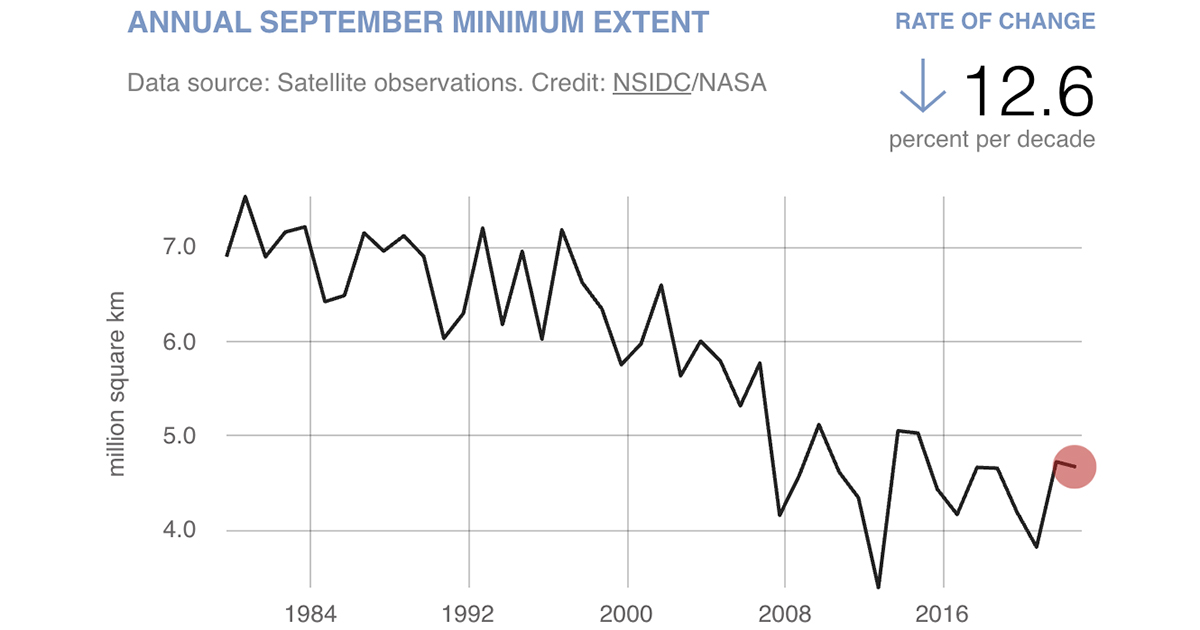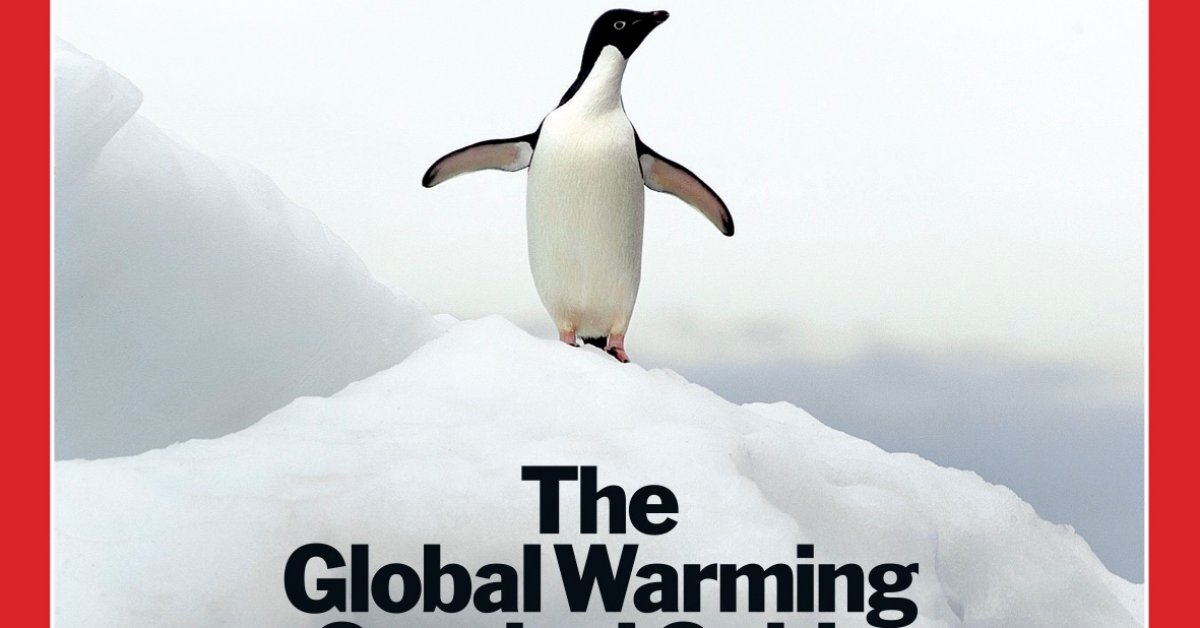I got this from a Delingpole article, and I found this list to be pretty interesting.
- We would be living through a new Ice Age by the year 2000.
- In 1974, the National Science Board announced: "During the last 20 to 30 years, world temperature has fallen, irregularly at first but more sharply over the last decade. Judging from the record of the past interglacial ages, the present time of high temperatures should be drawing to an endleading into the next ice age."
- We would all die when the ozone layer disappeared.
Rumors of
blind sheep—the increased radiation was thought to cause cataracts—and increased skin cancer stoked public fears. “It’s like AIDS from the sky,”
a terrified environmentalist told Newsweek’s staff. Fueled in part by fears of the ozone hole worsening, 24 nations
signed the Montreal Protocol limiting the use of CFCs in 1987.
These days, scientists understand a lot more about the ozone hole. They know that it’s a seasonal phenomenon that forms during Antarctica’s spring, when weather heats up and reactions between CFCs and ozone increase. As weather cools during Antarctic winter, the hole gradually recovers until next year.
- The oceans would be dead.
- Global Cooling would destroy the world.
The year 1972 remains infamous in the annals of meteorology for extreme weather events all around the globe. Towards the end of that year, in a letter dated 3 December 1972, two geologists George Kukla and Robert Matthews warned President Nixon that…
…a global deterioration of climate, by order of magnitude larger than any hitherto experienced by civilized mankind is a very real possibility and indeed may be due very soon.
- Acid rain would destroy our forests.
a generation ago, acid rain was one of the highest-profile green issues, of concern to all the main campaigning environmental groups and to the general public, who were presented with apocalyptic visions of forests dying and lifeless rivers.
It was also the subject of angry argument between nations – not least between the Scandinavian countries, and Britain. In the mid 1980s, when the row was at its height, Norway and Sweden took very strong objection to the fact the acid rain they were suffering from, which was causing serious problems for their forests and lakes, was largely British in origin.
- Overpopulation would result in worldwide famine.
Paul Ehrlich was an entomologist at Stanford University, known to his peers for his groundbreaking studies of the co-evolution of flowering plants and butterflies but almost unknown to the average person. That was about to change. In May, Ehrlich released a quickly written, cheaply bound paperback, The Population Bomb. Initially it was ignored. But over time Ehrlich’s tract would sell millions of copies and turn its author into a celebrity. It would become one of the most influential books of the 20th century—and one of the most heatedly attacked.
The first sentence set the tone: “The battle to feed all of humanity is over.” And humanity had lost. In the 1970s, the book promised, “hundreds of millions of people are going to starve to death.” No matter what people do, “nothing can prevent a substantial increase in the world death rate.”
Published at a time of tremendous conflict and social upheaval, Ehrlich’s book argued that many of the day’s most alarming events had a single, underlying cause: Too many people, packed into too-tight spaces, taking too much from the earth. Unless humanity cut down its numbers—soon—all of us would face “mass starvation” on “a dying planet.”
- We would deplete our natural resources.
In the 1970s, the Club of Rome predicted massive shortages of natural resources due to overconsumption and overpopulation, with disastrous effects on human health and material well-being.
In 1980, the Global 2000 Report to the President, wrote: "If present trends continue, the world in 2000 will be more crowded, more polluted, less stable ecologically, and more vulnerable to disruption than the world we live in now. . . . Despite greater material output, the world's people will be poorer in many ways than they are today."
- We would run out of oil.
1909: 25 or 30 years longer
"Petroleum has been used for less than 50 years, and it is estimated that the supply will last about 25 or 30 years longer. If production is curtailed and waste stopped it may last till the end of the century. The most important effects of its disappearance will be in the lack of illuminants. Animal and vegetable oils will not begin to supply its place. This being the case, the reckless exploitation of oil fields and the consumption of oil for fuel should be checked."
The same year that former Vice President Al Gore predicted that the Arctic sea ice could be completely gone, Arctic ice reached its highest level in two years, according to a report by the
Danish Meteorological Institute.
According to that report, which was cited by the
Daily Mail (UK) on Aug. 30, “[t]he Arctic ice cap has expanded for the second year in a row.” The U.S. National Snow and Ice Data Center (NSIDC)
confirmed this trend, but didn’t go into as much detail as the Danish Meteorological Institute.
But an examination of ABC, CBS and NBC news programs since the Daily Mail story was published found that all three networks ignored news that Arctic sea ice was at a two-year high.
Yet, the broadcast networks have spent years promoting Gore’s environmental agenda. On Jan. 29, 2013, on NBC “Today,” host Matt Lauer asked Gore, “After years of calling people’s attention to this issue, and now we’ve seen Superstorm Sandy and tornadoes and drought and extreme temperatures, do you feel vindicated?”
In his Dec. 10, 2007
Nobel Prize speech, Gore said “Last September 21, as the Northern Hemisphere tilted away from the sun, scientists reported with unprecedented distress that the North Polar ice cap is "falling off a cliff." One study estimated that it could be completely gone during summer in less than 22 years. Another new study, to be presented by U.S. Navy researchers later this week, warns it could happen in as little as 7 years.”
Meanwhile, the Antarctic Ice cap has been steadily increasing.
New York City underwater? Gas over $9 a gallon? A carton of milk costs almost $13? Welcome to June 12, 2015. Or at least that was the wildly-inaccurate version of 2015 predicted by ABC News exactly seven years ago. Appearing on Good Morning America in 2008, Bob Woodruff hyped Earth 2100, a special that pushed apocalyptic predictions of the then-futuristic 2015.
The segment included supposedly prophetic videos, such as a teenager declaring, "It's June 8th, 2015. One carton of milk is $12.99." (On the actual June 8, 2015, a gallon of milk cost, on average,
$3.39.) Another clip featured this prediction for the current year: "Gas reached over $9 a gallon." (In reality, gas costs an average of
$2.75.)
In January 1970, Life reported, “Scientists have solid experimental and theoretical evidence to support…the following predictions: In a decade, urban dwellers will have to wear gas masks to survive air pollution…by 1985 air pollution will have reduced the amount of sunlight reaching earth by one half….”
Paul Ehrlich chimed in, predicting in 1970 that “air pollution…is certainly going to take hundreds of thousands of lives in the next few years alone.” Ehrlich sketched a scenario in which 200,000 Americans would die in 1973 during “smog disasters” in New York and Los Angeles.
Ecologist Kenneth Watt told Time that, “At the present rate of nitrogen buildup, it’s only a matter of time before light will be filtered out of the atmosphere and none of our land will be usable.”
- “Decaying organic pollutants would use up all of the oxygen in America’s rivers, causing freshwater fish to suffocate.”
Just thought I would throw this one in for fun.
18 spectacularly wrong predictions made around the time of first Earth Day in 1970, expect more this year - AEI
Ehrlich sketched out his most alarmist scenario for the 1970 Earth Day issue of The Progressive, assuring readers that between 1980 and 1989, some 4 billion people, including 65 million Americans, would perish in the “Great Die-Off.”



